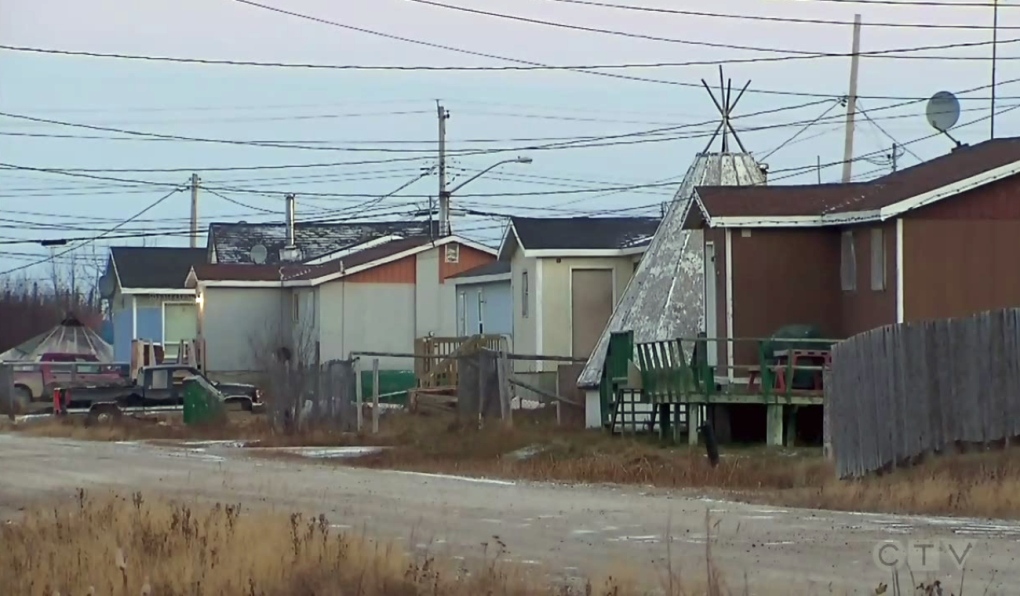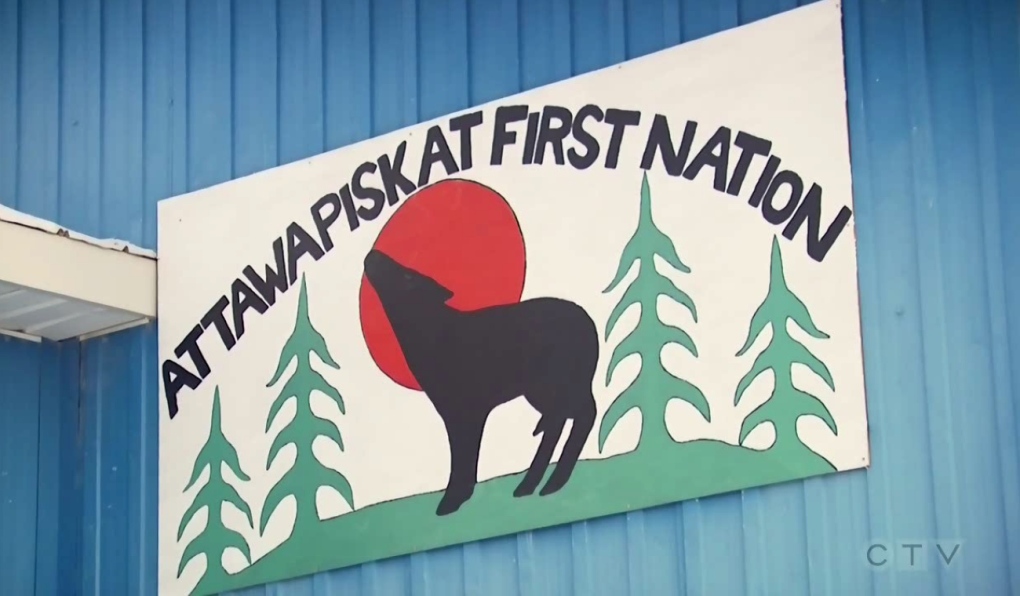Northern First Nations' housing crisis worsening
First Nations communities in Ontario’s far north say they have been calling for action on a major housing crisis for more than 30 years.
Officials tell CTV News that capacity is critically low and existing housing is far outdated.
A northern MPP is now speaking out about the issue.
Guy Bourgouin of the NDP is the MPP of the Mushkegowuk–James Bay riding, he said the small First Nations community of Attawapiskat is running out of time and options to resolve its housing crisis.
“The homes have two, three generations living in a house that was built for six people and we’re even seeing, sometimes, prospector tents behind. Because there’s no more room, so people are just living in prospector tents,” said Bourgouin.
“They’re on their traditional lands and yet they’re landlocked. Is it because we’re still acting like colonials? You know, just keeping control of communities like that? Lots of elders are saying, ‘Why are we asking the government to do this? It’s our land.’”
Ontario as a signatory to Treaty No. 9, meaning it must honour it alongside Ottawa.
Bourgouin said federal and provincial officials rarely visit far northern communities – however, he tries to do so every few months.
- Download our app to get local alerts on your device
- Get the latest local updates right to your inbox
In 2014, a task force was formed to address the various issues affecting Attawapiskat, including water quality and housing. Then in 2018 a memorandum of understanding was established between the area’s First Nations to govern their discussions and governments renewed their commitments in 2019.
“We’re saying to the government, no enough is enough,” said Bourgouin.
“Because it’s up north, on the James Bay coast, we tend to forget or not see it or people are not aware of it, but as a government, we need to do better.”
The region’s Grand Chief told CTV News there has been no movement in 30 years – maybe because people haven’t stepped foot in these communities.
 The aging houses in Attawapiskat are breaking down breaking the community's housing crisis to a breaking point. (Sergio Arangio/CTV News Northern Ontario)“They need to come and see, you know, what our people live through. There’s houses that should be condemned. There’s mould, these houses are old. You know, you have 19 people living in a home,” said Alison Linklater, Grand Chief of the Mushkegowuk Council.
The aging houses in Attawapiskat are breaking down breaking the community's housing crisis to a breaking point. (Sergio Arangio/CTV News Northern Ontario)“They need to come and see, you know, what our people live through. There’s houses that should be condemned. There’s mould, these houses are old. You know, you have 19 people living in a home,” said Alison Linklater, Grand Chief of the Mushkegowuk Council.
“They need to see that and understand, first-hand. And then, let’s talk solutions. I do believe that both governments mean well, but it’s time for these governments to come and listen to us. Work through these issues with us. Once we do sit down and they start listening to our concerns and finding solutions – I think it will happen.”
Linklater said the issue has been brought to the province and it has indicated a desire to help – but they’re not seeing action – adding federal government is willing to help, however it needs Ontario to be involved.
Bourgouin said there are only two solutions for Attawapiskat are to either move the community’s airport, to make more room for housing — or develop housing on Crown Land.
According to Linklater, Attawapiskat needs more infrastructure and permission to use Crown Land.
 Attawapiskat First Nation Sign (Sergio Arangio/CTV News Northern Ontario)Linklater said, an agreement that honours Treaty No. 9 and streamlines the process of resolving these issues must be developed.
Attawapiskat First Nation Sign (Sergio Arangio/CTV News Northern Ontario)Linklater said, an agreement that honours Treaty No. 9 and streamlines the process of resolving these issues must be developed.
He and other First Nation leaders say they are tired of asking for the same help for decades while having their communities plagued by homelessness, opioid crises and water quality issues.
“Housing can help with many of those issues, including their mental health, hygiene and overall well-being,” said Linklater.
Provincial officials acknowledged the issues and promised to work with the First Nations community while highlighting funding for supportive housing down south they are delivering on.
CTVNews.ca Top Stories

LIVE UPDATES Trudeau to appear at Liberal fundraiser tonight
Chrystia Freeland, Canada's finance minister, said in an explosive letter published Monday morning that she will quit cabinet. Follow along for live updates.
BREAKING Feds deliver fall economic statement with $61.9B deficit for 2023-24, amid political turmoil
Amid the news that Chrystia Freeland has resigned from her cabinet position as finance minister, the Department of Finance on Monday unveiled the long-anticipated fall economic statement, which reports a deficit of $61.9-billion for 2023-24.
Finance Minister Chrystia Freeland quits cabinet, Trudeau taps LeBlanc to replace her
In a stunning move, Deputy Prime Minister and Finance Minister Chrystia Freeland announced her resignation from Justin Trudeau's cabinet on Monday, after the prime minister told her he no longer wanted her in the top economic post. After hours of turmoil, Dominic LeBlanc, was sworn-in as her replacement in the finance portfolio.
W5 Investigates Connecting the dots on a landlord scam: how clues revealed a prolific con artist at work
In part one of a three-part investigation, W5 correspondent Jon Woodward reveals how a convicted con artist bilked dozens of people in a landlord scam.
Wisconsin school shooter who killed teacher, student was 17-year-old female student, police say
A teenage student opened fire Monday at a private Christian school in Wisconsin, killing a teacher and another teen during the final week before Christmas break. The shooter also died, police said.
Travel risk: Which countries does Canada recommend avoiding?
Canadians planning to travel abroad over the holidays should take precautionary steps to ensure they're not unintentionally putting themselves in harm's way.
Search continues for missing person in deadly B.C. landslide; local state of emergency declared
The village of Lions Bay has declared a local state of emergency as the search continues for a missing person, after a house was swept away in a landslide on Saturday.
Canada Post operations to resume on Tuesday, company says
Mail is set to begin moving again on Tuesday after a month-long strike by Canada Post employees comes to a close.
Jury delivers guilty verdicts for accused in Montreal-area triple homicide trial
The accused in a triple homicide trial south of Montreal has been found guilty.





























